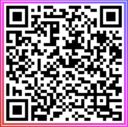Posted on February 18, 2025
Simple Hash Puzzle
Here’s an example of a simple hash puzzle:
Puzzle:
I have hashed a short, common English word using the SHA-256 algorithm. Here’s the hash:
e3b0c44298fc1c149afbf4c8996fb92427ae41e4649b934ca495991b7852b855
Can you guess the word?
Solution:
The hash provided in this puzzle actually corresponds to an empty string or no input at all, which might be a bit of a trick. Here’s how you would typically solve a real hash puzzle:
-
Step 1: You would try common words or phrases, especially if given hints about the length or nature of the word.
-
Step 2: If no hints are provided, you might use a brute-force method or a dictionary attack, where you systematically hash each word in a dictionary until you find a match.
For instance, if the actual puzzle was:
559aead08264d5795d3909718cdd05abd49572e84fe55590eef31a88a08fdffd
This hash corresponds to the word “test” in SHA-256:
-
echo -n “test” | sha256sum
Would produce the hash above, showing that “test” is the word being sought if you were to solve this puzzle.
Remember, in real scenarios with stronger security, hash puzzles might involve more complex hashing with salts or multiple rounds, making them much harder to crack without the exact input.





 Bitcoin
Bitcoin  Ethereum
Ethereum  XRP
XRP  Tether
Tether  Solana
Solana  Dogecoin
Dogecoin  Bitcoin Cash
Bitcoin Cash  Litecoin
Litecoin  Monero
Monero  PAX Gold
PAX Gold  Zcash
Zcash